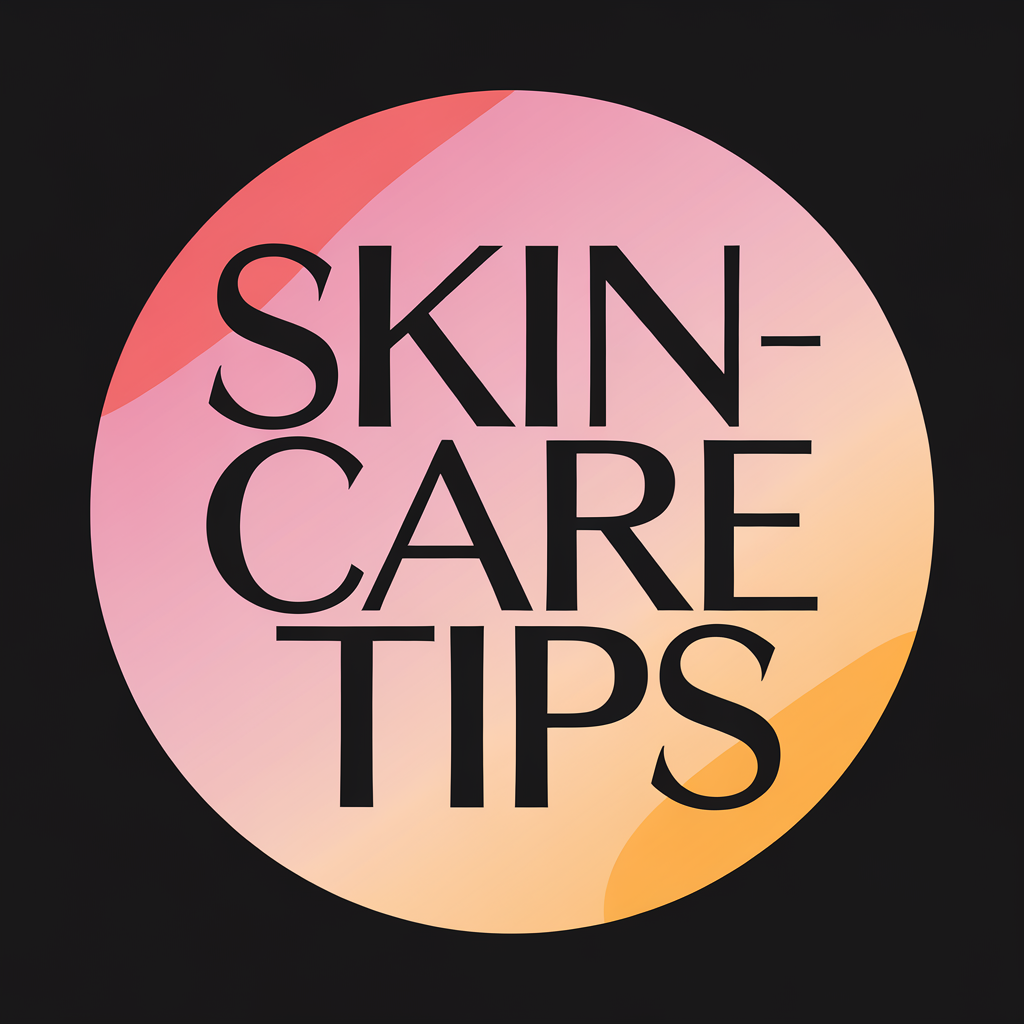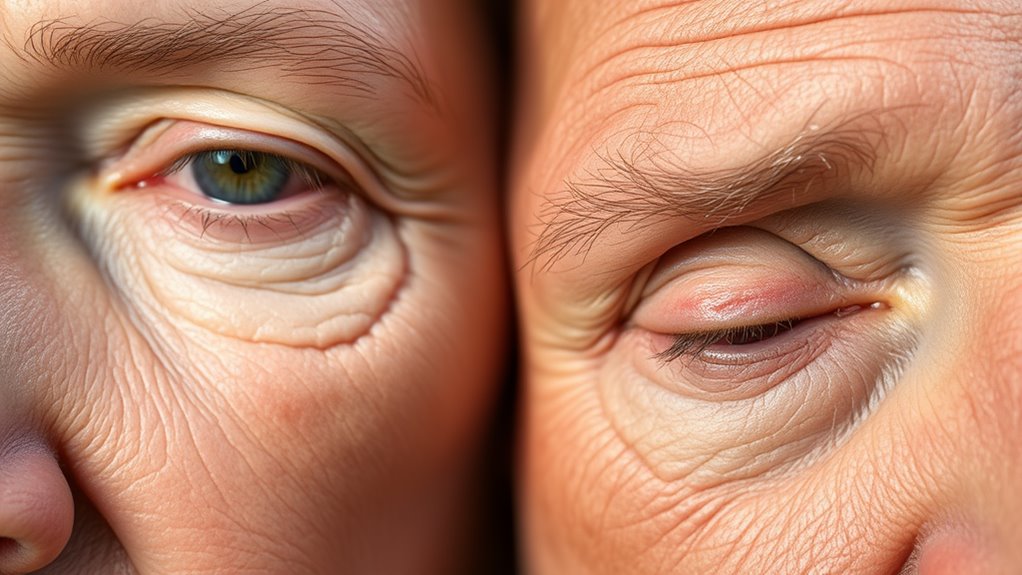Fine Lines Vs Wrinkles- What’s the Real Difference.
As you examine your skin, you’ll find fine lines are shallow creases from UV exposure and daily habits, while wrinkles are deeper folds from aging and damage. Understanding these differences helps you choose the right approach, so let’s uncover what truly sets them apart and how to address them effectively.
Key Takeaways
- Fine lines are shallow, surface-level creases caused by early collagen loss and repetitive facial movements.
- Wrinkles are deeper, persistent grooves resulting from advanced dermal breakdown and reduced skin elasticity.
- Fine lines primarily form around the eyes and mouth due to everyday expressions and environmental exposures.
- Wrinkles develop from factors like prolonged sun damage, aging, and lifestyle habits such as smoking.
- Unlike fine lines, wrinkles involve structural skin changes, including sagging and loss of resilience.
What Are Fine Lines?
Fine lines are the subtle creases that form on your skin as it ages, typically appearing first around the eyes, mouth, and forehead.
In the fine lines vs wrinkles discussion, you recognize these as initial, superficial marks from collagen breakdown and muscle movements, not deeper folds.
Sun damage and dehydration accelerate their onset, making your skin lose elasticity faster.
You can observe them through close inspection, often as the earliest aging indicators.
To manage them, apply sunscreen daily and use retinoids, which boost cell turnover and minimize visibility effectively.
Early intervention keeps your complexion smooth.
Additionally, retinol can be particularly effective in addressing fine lines by stimulating collagen production and improving skin texture.
What Are Wrinkles?
What’re wrinkles?
You encounter wrinkles as deeper, more pronounced skin creases that penetrate the dermal layers, contrasting with fine lines.
These form through structural changes in your skin’s architecture, leading to visible, persistent folds.
- Deep furrows on your forehead that etch permanent lines from skin’s loss of resilience.
- Crow’s feet around your eyes appearing as etched valleys under light.
- Nasolabial folds beside your mouth creating shadowed contours on the face.
- Sagging neck skin forming rope-like ridges that alter your profile’s smoothness.
To address these changes, consider peptide therapy as a scientifically validated method for enhancing skin resilience and reducing visible signs of aging.
Causes of Fine Lines
Several factors, including sun exposure and repetitive facial movements, actively contribute to the formation of fine lines on your skin.
UV radiation from the sun breaks down collagen and elastin fibers, accelerating surface creasing.
You create micro-folds through everyday expressions like smiling or squinting, which etch into your epidermis over time.
Dehydration robs your skin of moisture, making lines more visible, while environmental pollutants and smoking generate free radicals that damage cellular structures.
Recognizing these triggers empowers you to protect your skin proactively, maintaining its youthful resilience through informed habits.
Additionally, lack of sleep can exacerbate fine lines by hindering the skin’s overnight repair processes.
Causes of Wrinkles
As you age, your skin’s collagen and elastin break down, leading to the primary effects of aging on wrinkle formation.
Sun exposure accelerates this damage by breaking down your skin’s protective layers through UV radiation.
Lifestyle factors, such as smoking and poor diet, further contribute to these changes, making it essential to address them for skin health.
By adopting strategies to slow biological aging, you can help maintain your skin’s health and reduce wrinkle formation.
Aging Effects
Aging profoundly influences wrinkle formation as your skin’s collagen and elastin fibers naturally degrade over time.
This process thins your dermis, diminishing elasticity and resilience, leading to deeper, more pronounced wrinkles that accumulate with age.
You’ll observe these changes accelerating in your 30s and beyond, as cellular turnover slows and intrinsic factors dominate.
- Your facial expressions etch permanent furrows, like worry lines on your forehead from repeated muscle movements.
- Skin loses its youthful bounce, appearing as sagging cheeks that fold into creases during smiles.
- Neck and décolletage develop telltale lines, resembling crinkled paper from diminished support structures.
- Hands reveal age through veined, wrinkled skin, mirroring the overall decline in dermal integrity.
Sun Exposure
Sun exposure ranks among the primary causes of wrinkles, as ultraviolet (UV) rays from the sun directly damage your skin’s collagen and elastin fibers.
UVA rays penetrate deeply, breaking down these proteins and triggering oxidative stress that accelerates aging.
UVB rays cause surface burns, further degrading your skin’s structure and reducing its resilience.
Over time, you accumulate this damage, leading to deeper lines and loss of elasticity.
Protect yourself by understanding that repeated exposure, even without burning, compounds these effects, making early intervention essential for maintaining youthful skin.
Lifestyle Factors
Various lifestyle factors significantly accelerate wrinkle formation by compromising your skin’s structural integrity.
You expose your dermis to accelerated aging through habits that deplete collagen and elastin, essential for maintaining firmness and resilience.
- Imagine puffing on a cigarette; it actively releases free radicals that shred elastin fibers, leaving your skin sagging and lined.
- Picture neglecting fruits and veggies; antioxidants vanish, allowing UV-induced damage to etch deeper creases into your epidermis.
- Envision chronic stress surging cortisol; it breaks down collagen matrices, making your face appear etched with premature furrows.
- Think of skimping on sleep; cellular repair stalls, as if your skin’s nightly regeneration army has deserted, fostering visible wear.
Key Differences Between Fine Lines and Wrinkles
While fine lines and wrinkles both reflect skin’s response to time and environment, they differ markedly in their formation, depth, and visibility.
You form fine lines through subtle collagen depletion and repetitive movements, resulting in shallow, surface-level creases that appear early and fade with hydration.
Wrinkles, however, arise from deeper dermal breakdown caused by prolonged UV damage or aging, carving persistent, etched grooves into your skin.
This distinction means fine lines respond to preventive measures like moisturizers, while wrinkles demand targeted interventions such as retinoids to rebuild structure effectively.
Embracing lifestyle factors such as a balanced diet and sun protection can further prevent the progression from fine lines to wrinkles.
Characteristics of Fine Lines
You notice fine lines as subtle, shallow creases on your skin that often appear around the eyes and mouth.
These lines form primarily from repetitive facial movements and environmental exposures like UV radiation.
Recognizing their visual and causal traits equips you to address them effectively in your skincare routine.
To combat the effects of UV radiation, incorporating sunscreen application into your daily regimen can help prevent further damage.
Visual Appearance
Fine lines emerge as subtle, shallow creases on the skin’s surface, typically forming in areas like the eyes and mouth due to repeated facial movements.
You observe these as delicate, surface-level marks that preserve your skin’s even tone without disrupting its integrity.
- They appear as faint, thread-like impressions you can spot under direct light, enhancing your skin’s natural play of shadows.
- You’ll notice their shallow depth, creating a soft, barely perceptible ripple effect on your epidermis.
- These lines form narrow, linear patterns that maintain a uniform width, avoiding the pronounced grooves of deeper wrinkles.
- You see them as ephemeral etchings that subtly interact with your facial expressions, adding a refined texture.
Formation Causes
The formation of fine lines stems from repetitive facial movements that strain the skin’s elastic fibers, such as smiling or squinting, which you’re likely to encounter as part of daily expressions.
These actions repeatedly crease your epidermis, breaking down collagen and elastin over time, leading to superficial creases.
You accelerate this process through environmental factors like UV radiation, which damages your skin’s protective barrier and reduces hydration.
Dehydration further weakens your dermal structure, making lines more prominent.
To mitigate this, you must protect your skin with sunscreen and hydration, preserving its resilience against daily wear.
Characteristics of Wrinkles
Wrinkles appear as deep, persistent folds in the skin, often stemming from collagen loss and elastin degradation.
You notice these lines altering your facial structure, making them more pronounced and less flexible over time, which impacts your skin’s overall resilience.
- Deep creases form around your eyes, creating shadowy valleys that persist even at rest, highlighting lost elasticity.
- Forehead lines etch prominently, like etched grooves from repeated expressions, revealing underlying dermal thinning.
- Neck skin sags into folds, mimicking crinkled fabric due to diminished support fibers.
- Cheek wrinkles deepen unevenly, casting subtle shadows that accentuate facial asymmetry and textural changes.
These wrinkles can sometimes signal underlying health issues that affect the skin’s integrity.
Treatment Options for Fine Lines
While wrinkles mark deeper skin changes, you can tackle fine lines through targeted treatments that boost collagen and enhance elasticity.
You start with topical retinoids, which accelerate cell turnover and stimulate collagen synthesis, as clinical studies confirm.
Peptides and hyaluronic acid serums hydrate and firm your skin, reducing line visibility.
For advanced results, microneedling creates micro-injuries that trigger natural repair, while fractional lasers resurface layers precisely.
Always consult a dermatologist; they ensure treatments match your skin’s needs, minimizing risks and maximizing efficacy for smoother results.
Additionally, hyaluronic acid serves as a highly effective hydrating compound that dermatologists recommend for maintaining optimal skin moisture and elasticity.
Treatment Options for Wrinkles
How do you effectively combat deeper wrinkles?
You target these with evidence-based interventions that rebuild collagen and elastin in your dermis, addressing age-related degradation.
Choose options tailored to your skin’s needs for optimal results.
- Envision hyaluronic acid fillers injecting volume into creases, smoothing your face like a master sculptor refining clay.
- Picture fractional lasers vaporizing damaged layers, revealing fresh skin beneath as sunlight revives parched earth.
- Imagine retinol creams accelerating cell turnover, uncovering radiant layers hidden under worn surfaces.
- Visualize microneedling devices creating controlled injuries, sparking collagen growth to fortify your skin’s protective barrier.
For enhanced hydration and to complement these treatments, incorporate hyaluronic acid into your daily skincare routine to help retain moisture and improve skin plumpness.

